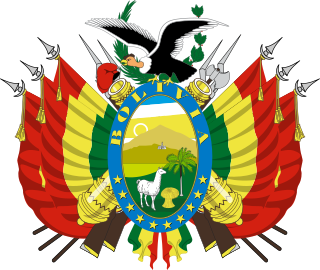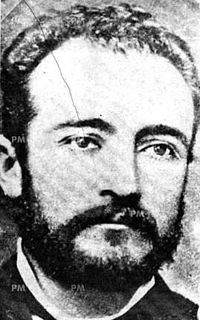 W
WThe Bolivian passport is the official travel document issued to citizens of Bolivia by the Bolivian Government through its specially appointed office, Dirección General de Migración. The document can also be extended abroad via consulate representatives.
 W
WThe Casa Grande del Pueblo, is the Bolivian presidential residence (palace) that replaced the Palacio Quemado in 2018. Inaugurated on 9 August 2018 during the presidency of Evo Morales as the official residence of the President of Bolivia, the interim government of Jeanine Áñez reverted to occupying the Palacio Quemado from 2019 to 2020. Following the inauguration of Luis Arce on 8 November 2020, it has again become the residence of the president.
 W
WThe Chamber of Deputies is the lower house of the Plurinational Legislative Assembly of Bolivia. The composition and powers of this house are established in the Political Constitution of the State. The session room is located in the Legislative Palace building in Plaza Murillo.
 W
WThe Chamber of Senators is the upper house of the Plurinational Legislative Assembly of Bolivia. The composition and powers of the Senate are established in the Political Constitution of the State and others determined by Bolivian laws. The Senate is the legislative body of the country, where each Senator represents the interests of their Departments. The session room is located in the Legislative Palace building in Plaza Murillo.
 W
WThe current Constitution of Bolivia came into effect on 7 February 2009 when it was promulgated by President Evo Morales, after being approved in a referendum with 90.24% participation. The referendum was held on 25 January 2009, with the constitution being approved by 61.43% of voters.
 W
WCorruption in Bolivia is a major problem that has been called an accepted part of life in the country. It can be found at all levels of Bolivian society. Citizens of the country perceive the judiciary, police and public administration generally as the country's most corrupt. Corruption is also widespread among officials who are supposed to control the illegal drug trade and among those working in and with extractive industries.
 W
WCouncil of Ministers of Bolivia, or Cabinet of Bolivia, is part of the executive branch of the Bolivian government, consisting of the heads of the variable number of government ministries. The Council of Ministers are ministers of state and conduct the day-to-day business of public administration within Bolivia. The President of Bolivia may freely reorganize the executive branch, with the most recent comprehensive reorganization occurring in February 2009. Since then, the Ministry for the Legal Defense of the State has become the independent office of Solicitor General, and the Ministry of Communication has been created.
 W
WThe Federal Government Junta was a civil-military triumvirate which temporarily assumed power in Bolivia after Liberal party victory in the Federal Revolution of 1899. It was composed of Colonel José Manuel Pando, Serapio Reyes Ortiz, and doctor Macario Pinilla Vargas. The Junta was proclaimed on December 12, 1898, led the Liberal effort in the Revolution, and governed Bolivia from April 12 to October 25, 1899. It carried out various institutional reforms and erected public works, such as the construction of the Palace of Government in La Paz. In 1899, a National Convention elected Pando president, replacing the Junta.
 W
WThe Ministry of Economy and Public Finance is a cabinet ministry of the government of Bolivia responsible for overseeing the nation's public finances and responsible for formulating and implementing macroeconomic policies that preserve stability and promote economic and social equity.
 W
WThe Bolivian Palace of Government, better known as Palacio Quemado, was the official residence of the President of Bolivia from 1853 to 2018 and again briefly from 2019 to 2020. It is located in downtown La Paz on Plaza Murillo, next to the La Paz Cathedral and across from the Bolivian legislature. On 9 August 2018, it was replaced by the Casa Grande del Pueblo as the residence of the president by President Evo Morales. The interim government of Jeanine Áñez briefly reverted to occupying the Palacio Quemado from 2019 until 2020 when the newly elected Luis Arce returned to using the Casa Grande. It now serves as a museum.
 W
WThe Plurinational Constitutional Court is a national court in Bolivia charged with adjudicating the constitutionality of laws, government power, and treaties in accordance with the country's 2009 Constitution, which created it. The Court is headquartered in Sucre and consists of seven members. It was first seated on 2 January 2012. Its powers are set out in Articles 196–204 of the 2009 Constitution, the Law of the Judicial Organ, and Law of the Plurinational Constitutional Court . The Plurinational Constitutional Court replaces the Constitutional Court of Bolivia, which operated from 1999 to 2011.
 W
WThe Plurinational Legislative Assembly is the national legislature of Bolivia, placed in La Paz, the country's seat of government.
 W
WThe vice president of Bolivia, officially known as the vice president of the Plurinational State of Bolivia, is the second highest political position in Bolivia. The vice president replaces the president in his definitive absence or others impediment and is the President of the Legislative Assembly.